October 2016 Gathering
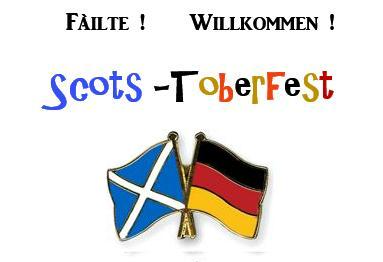
Thursday October 13, 2016 at
Haus Murphy's Restaurant
5739 W. Glendale Ave., Glendale AZ
6:30 pm --------- Order dinner from the menu
7:30 pm ------------- Annual General Meeting
8:00 pm ---------------------- 50/50 drawing
Guests order drinks and food from the Menu
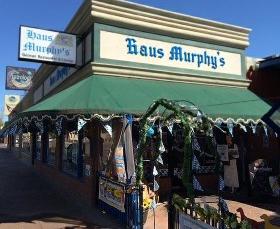
Please advise Mark Pelletier of the number attending
Letter from the Editor, Don Finch
Dear fellow Caledonians:
 Imagine an historic Scottish event that is no older than one here in Phoenix! The Edinburgh Oktoberfest opened its doors for the first time in 2013, which is when the CSA held its premier Scots-Toberfest in the courtyard of the ICC. We’ve got a bit of catching up to do with Munich, however. Their Oktoberfest has a long tradition starting 200 years ago - a happy celebration of the gathering of the harvest. Imagine an historic Scottish event that is no older than one here in Phoenix! The Edinburgh Oktoberfest opened its doors for the first time in 2013, which is when the CSA held its premier Scots-Toberfest in the courtyard of the ICC. We’ve got a bit of catching up to do with Munich, however. Their Oktoberfest has a long tradition starting 200 years ago - a happy celebration of the gathering of the harvest.
Please join us Thursday October 13th at Haus Murphy’s in Historic Downtown Glendale as we’ll be celebrating this annual fall festival. It’s also our AGM, annual general meeting, so we’ll give a brief update on our financial position and recent By-Law changes.
I was honored to attend parts of the 118th annual national convention of the Daughters of Scotia which was held last week in Mesa. Our own Susan Wallace was elevated to Grand Chief Daughter of the Grand Lodge, a significant accomplishment. Janet Grant was voted into the position of Grand Conductor, an officer of the Grand Lodge. Congratulations to both!
Mark your calendars for these upcoming events.
• The Tucson Celtic festival will be held November 4-6 at Rillito Raceway Park. The CSA will have an information tent and is looking for volunteers who’ll give out brochures and answer questions for 2 hour shifts. http://tucsoncelticfestival.org
• Our November gathering will again honor the 23 RAF Flight Cadets who lost their lives during training at Falcon Field in the early years of WW2. Please come to the Memorial Service at 10:45 am, on Sunday November 13th at Mesa City Cemetery, when V.P. David McBee will present a wreath on behalf of the Society. Lunch will follow at The Harp Pub.
• Saturday December 3rd marks our formal St. Andrew’s Day Dinner & Dance at the Phoenix Country Club which will be wonderfully decorated for Christmas. We encourage the ladies to wear their festive gowns and perhaps gentlemen, a sprig of mistletoe in your lapel!
• We’ll be joining with Fuil Celtic to celebrate Burns Night at The Dubliner Pub on Saturday January 21st, 2017. More details to follow.

See you at Haus Murphy’s. Ein prosit!
Cheers! Don Finch, Editor
|
|
The Glen Nevis Ghost
By: Jim Morrison
Reading the article on The Glen Cannich Beastie in last month’s newsletter reminded me of an incident which took place many years ago in Glen Nevis.
At the time I was a member of the Royal Air Force Mountain Rescue Service. I was based at RAF Kinloss, just outside Forres on the Moray coast. Our area of responsibility covered the whole of the North of Scotland, which as you can imagine is a vast mountainous area.
As a part time member of the Team I carried out my normal military duties as an aircraft electrical engineer during the week and on the weekends exercised with the team in various locations throughout the north of Scotland. On one particular weekend exercise we were based camped in a barn in Glen Nevis – Cameron’s Barn – which was a well-known haunt to Scottish Mountaineers looking for a weekend ‘bivouac’.
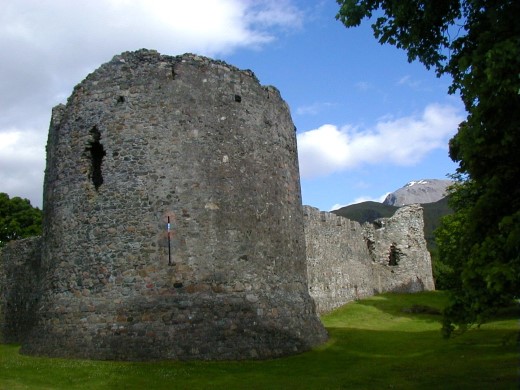
Old Inverlochy Castle in the glen below Ben Nevis
This particular event took place on a Saturday night in the winter of 1966. After a hard day’s exercise on the local hills the team returned to Cameron’s Barn for an evening meal, once the pangs of hunger were sated a team truck full of ‘troops’ dispatched to the local hostelries in the nearby town of Fort William. In those days Scotland had very strict licensing laws; the pubs had to call last orders at 10:20pm and closed the doors at 10:30pm. Mountaineering is a very arduous undertaking, and even in the middle of winter, a young lad can build up a healthy thirst after eight hours tramping through the Highlands, so in the short time that was available to us justice was done to rectify the situation.
The duty driver, who had not been able to partake in the festivities, ensured the transport departed for Cameron’s Barn fifteen minutes after pub closing time. Fully refueled and the pubs now shut it was the tradition for the younger lads to miss the returning truck and find the local dance. We were always ready to expend a bit more energy enjoying an evening of ‘Stripping the Willow’, Eightsoming the Reel’ and ‘Dashing the White Sergeant’. All very great fun which the local lassies thoroughly enjoyed. If one was lucky and managed to chat up a fair maiden it often entailed a long walk to take the girl home, then an even longer walk back to Cameron’s Barn in Glen Nevis.
On this particular evening a friend of mine, let’s call him Dave, and I were lucky to be afforded the privilege of escorting two young maidens back to their abode. As they didn’t live close to each other Dave and I were separated.
After saying my goodnights to the young damsel I escorted home, I started on my 4 to 5 mile walk back to Cameron’s Barn. The night was cold and overcast with clouds scudding across the sky. There was a full moon but the light was being ‘switched on and off’ by the passage of the clouds. The road up Glen Nevis to the barn was very narrow and twisted and turned to follow the course of the River Nevis. The hour was getting late and the next day promised to be another hard day on the hill. So to speed my progress I started to run along the road. There is a graveyard setback from the road a little and there were many a tale of strange occurrences taking place in and around the area, stories which grew in strength with the telling.
As I approached the grave yard I saw a figure several hundred yards in front of me, from the way he was walking I recognized him as my friend Dave. Wanting to join him on the lonely walk up the Glen I called out to him. Just as I did so the light started to play tricks as the cloud obscured then revealed the moonlight. Dave stopped dead in his tracks and turned around to look in my direction. To let him know it was me I shouted again and raised my right hand and waved it in the air to attract his attention. Imagine my surprise when he turned tail and dashed off up the Glen towards the barn. At the time I thought it was a very strange reaction and continued my journey at a more leisurely pace.
When I arrived back at the barn I was surprised to see all the team were up and awake. In the middle of their midst’s was Dave telling them of the terrifying experience he had just witnessed.
His story was – ‘I had just passed the graveyard when I heard a sound like a banshee coming up the glen behind me. I stopped for a second to see what it was. Then I saw this apparition, it was a seven foot tall highlander dressed in full regalia waving a big claymore in his hand. He roared at me several times so I turned and ran as fast as I could up to the barn. I managed to outpace him but it was a close thing at times.’
The mind plays some very strange tricks, or was it his evening consumption of beer that aided his flight of fancy?
I didn’t tell anyone that it was me who was following him, why spoil a good story! I believe it was part of the folklore that lived on in Cameron’s Barn for many a year.
|
|
Research Your Scottish Ancestry
Get Organized Now
by Robert M. Wilbanks IV, B.A.
Chief Genealogist & Historian, C.S.A.
genealogy@arizonascots.com
When it comes to genealogy, I cannot begin to say how significantly important it is to be organized. This is truly a critical factor to successful genealogy. For beginning genealogists, it is important to begin and maintain a habit of organization.
The genealogy family tree grows exponentially. This is a literal statement, not metaphoric. With the discovery of each new generation, the number of family names being researched doubles. The amount of information being collected can very easily and quickly get out of hand. This in turn can affect the researcher’s ability to continue the search effectively.
In genealogy, there is no one particularly notable system of organization. Since people are different, fundamental organizational systems can vary from person-to-person according to what works uniquely for them. As long as the information is proven, the documentation can be shown, and the research and analysis is sound, genealogists can incorporate or create any system that works for them. Two key factors are key: 1. to have a system that allows for expanding information; 2. the research can be followed and picked up by others.
While there are many software or database types of genealogy programs to help organize and chart information, there are many materials and types of information that these systems cannot incorporate. Outside of genealogy software, examples of basic organizational tools are a computer, filing cabinet, copier/scanner/printer, digital camera, bag or briefcase for research materials on the go, etc. Notably with the computer, in addition to e-mail and an internet browser, a good word processing program is helpful for abstracting or transcribing information, writing detailed history or biography, keeping track of correspondence and research, etc.
Let me be clear, that when speaking of genealogy organization, I am not strictly talking about a filing system. There are multiple facets of genealogy that require organization. My experience has taught me that the entire genealogy process can be broken down into three components of organization. First, there is Stage 1, organization as part of the actual research. Stage 2 is a basic filing system. And Stage 3 is the final presentation.
In a little more detail, Stage 1 Organization - Research is broken into two parts. Part 1 is the organization during the actual research process in action. In other words, keeping good records during research by tracking what and where research is being conducted, and documenting the findings as they are discovered. Being able to cite sources is very important to genealogy, so documenting the research during the action of researching is significant. Part 2 is the research preparation. In other words, having a research plan or strategy. Analyzing and evaluating what is known, what has been found previously, and coordinating the next actions accordingly is an important part of research.
Stage 2 Organization - Filing is about document or information storage. Whether filing hardcopies and/or digital findings, there needs to be an organization system to make it easy to find the found sources and saved information, and refer back to them as needed. This includes letters and e-mail, photos, documents, etc. For example, most people find it easier to organize all research separately by the different family names, and then by the types of records or material, such as correspondence, photos, research documents, etc. Then organize the documents and information by separating them by locality or by record type, such as census records, land records, wills & probate, newspaper, parish registers, etc.
Lastly, Stage 3 Organization - Presentation is basically having a final presentation of the family history that can be shared with others, whether in a book, poster display, wall chart, photo album, scrap book, website, etc. The most common, and in-depth, is the writing, printing and publishing of the family history. In genealogy, there are several formal accepted genealogy writing styles and numbering systems. All the genealogy programs out there provide several writing and numbering options for a final presentation.
I know that organization is something beginning genealogists rarely think of as they excitedly delve into the research. Most beginning books and classes rarely cover organization as an element of genealogy in-depth. Unfortunately, the beginning genealogists discover on their own, the hard way, the necessity of being organized after they are already deeply buried in the research and documents found. I cannot emphasize enough the importance of getting and maintaining a habit of organization in the genealogy research process. |
|
The Darien Project
by Jo Ramsdell
The Darien project was an unsuccessful attempt by the Kingdom of Scotland to become a world trading nation by establishing a colony called Caledonia on the Isthmus of Panama on the Gulf of Darien in the late 1690s. The aim was for the colony to have an overland route that connected the Pacific and Atlantic oceans. From the beginning the undertaking was beset by poor planning and provisioning, divided leadership, lack of demand for trade goods, devastating epidemics of disease and failure to anticipate the Spanish Empire’s military response.

Map courtesy of Wikipedia
As the Darien Company was backed by nearly 50 % of all the money circulating in Scotland, its failure left the entire Lowlands almost completely ruined and was an important factor in weakening their ability to resist the Act of Union which was completed in 1707.
The late 17th century was a difficult period in Scotland. Its economy was small, the range of exports was very limited and it was in a weak position in relation to England. Its once thriving industries such as shipbuilding were in deep decline. The 1690s saw widespread crop failure which brought famine. In the face of opposition by English commercial interests, the Company of Scotland raised subscriptions in Amsterdam, Hamburg and London for the project. Returning to Edinburg, the Company of Scotland raised 400,000 pounds (equivalent to roughly 47million today) from investments from every level of society. It was, for Scotland, a massive amount of capital.
Trader and financier, William Paterson, had long promoted a plan for a colony on the Isthmus of Panama—the principle which would must later lead to the construction of the Panama Canal.
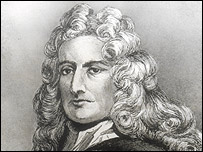 Many soldiers, who had little hope of other employment, eagerly joined the Darien project. The first expedition of five ships—Saint Andrew, Caledonia, Unicorn, Dolphin and Endeavor—set sail from the port of Leith in July 1698 with around 1200 people on board. The fleet made landfall on the Darien coast on November 2. The settlers christened their new home “Caledonia.” Many soldiers, who had little hope of other employment, eagerly joined the Darien project. The first expedition of five ships—Saint Andrew, Caledonia, Unicorn, Dolphin and Endeavor—set sail from the port of Leith in July 1698 with around 1200 people on board. The fleet made landfall on the Darien coast on November 2. The settlers christened their new home “Caledonia.”
After building a fort (Fort Andrew) they began erecting huts for the settlement and planting gardens. Letters sent hope by the expedition created a misleading impression that everything was going according to plan. However, it meant the Scottish public would be completely unprepared by the coming disaster. Agriculture proved difficult; the local Indians were hostile; there was almost total failure to sell goods to the few passing traders; the Spanish military was threatening. By the summer of the following year, malaria and fevers led to many deaths. The mortality rate rose to ten settlers a day. After just eight months, the colony was abandoned in July 1699. Only 300 of the 1200 settlers survived. A single ship returned to Scotland with a few survivors. Around 250 survivors, including William Paterson, sailed north to New York City, a small town at the time. A few months later they returned to Caledonia with new supplies and help from the local people of New York to try again to establish their colony.
Word of the first expedition’s troubles did not reach Scotland in time to prevent a second voyage of more than 1000 people. The second expedition arrived in Caledonia on November 30, 1699 expecting to find an established village. The new settlers were very unhappy to find the village in disarray with only a few inhabitants. Moral was low and little progress was made.
Then the Spanish army closed in on Fort Andrew and besieged it for a month. Disease was still the main cause of death. The Spanish commander called for the Scots to surrender and avoid a final assault. After negotiations, the Scots were allowed to leave with their guns and the colony was abandoned. Of the total 2500 settlers that set off, just a few hundred survived.
The failure of the project provoked tremendous discontent throughout Lowland Scotland where nearly every family had been affected. The failure of the Darien project has been cited as one of the motivations for the 1707 Act of Union. The Scottish establishment (landed aristocracy and mercantile elites) considered that their best chance of being part of a major power, would be to share the benefits of England’s international trade. Furthermore, Scotland’s nobles were almost bankrupted by the Darien fiasco. Some Scottish nobility petitioned Westminster to wipe out the Scottish national debt and stabilize the currency. Although the first request was not met, the second was and the Scottish Pound was given the fixed value of an English shilling. |
|
Daughters of Scotia - Annual Convention
|
|
 The Caledonian Sociey wishes to congratulate: The Caledonian Sociey wishes to congratulate:
Janet Grant, Grand Conductor
(on the left)
and
Sue Wallace, Grand Chief Daughter (on the right)
on their recent appointments to office in the Daughters of Scotia. |
|
COMING EVENTS & Highland Games in Arizona and Bordering States
Games Calendar compiled by Clan Campbell Society NA
| October 7-9 |
Seaside Games, Ventura CA |
| October 13 |
OCTOBER GATHERING "ScotsToberfest" and AGM |
| November 4-6 |
TUCSON CELTIC FESTIVAL & HIGHLAND GAMES Tucson |
| November 4-6 |
Moab Celtic Festival Moab UT |
| November 13 |
RAF CADET MEMORIAL CEREMONY AND LUNCH |
| December 3 |
ST. ANDREW'S DAY DINNER & DANCE |
| January 21 |
ROBBIE BURNS SUPPER - DUBLINER PUB |
| March 4-5 |
PHOENIX SCOTTISH GAMES - our new name! |
|
|
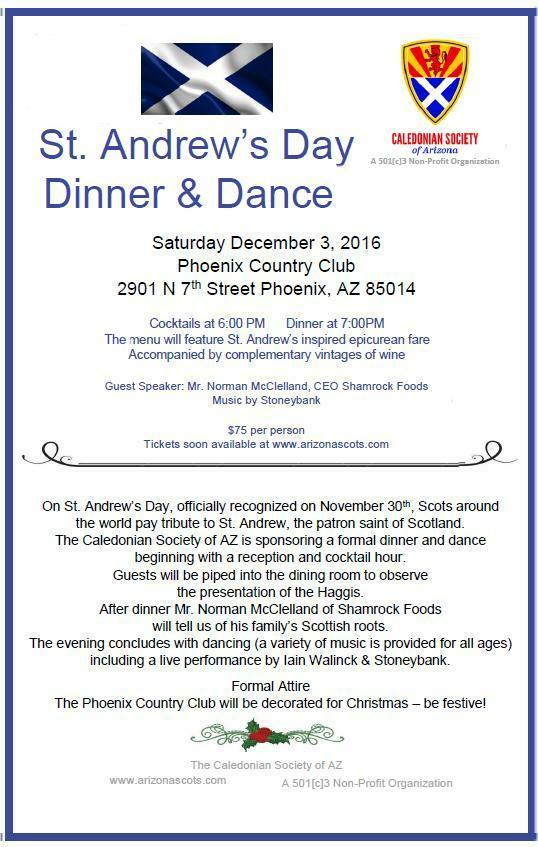
Please advise us by email of the names of those in your party, and the names of other attendees with whom you wish to sit.
|
|
Women's World Championship
by Michelle Crownhart
The Caledonian Society of Arizona is excited to announce that the Women’s World Championship is going to be hosted at the Highlander Games in Vermillion, Ohio on August 12, 2017.
Although we are saddened to not be the exclusive host to this event, this move will expand the exposure of the Elite/Professional Women in the Highland Games!
Spectators that have been unable to attend in Phoenix will now get the opportunity to see the best in the world compete for this title.
Congratulations to the ladies for this giant move forward! We wish you luck and hope to see you back in Phoenix gracing our field with your athleticism. |
Membership Renewal Reminder
Dues are still only $25 Single and $40 Family. This admits you to all our wonderful monthly events with food and entertainment provided.
It’s easy to pay by credit card or PayPal, just jump to the Membership Page
Society Gatherings
Regular membership gatherings are held the second
Thursday of each month at the Irish Cultural Center,
1106 N. Central Ave., Phoenix, AZ. beginning at
6:30 pm. Come join us or log on to www.arizonascots.com.
|
|
Caledonian Society Officers
|
|
|